SSC CGL - Detailed Guide 2025
Self-Paced Course

Revolt of 1857
Reference: Lucent GK, NCERT Class 6–12
Background and Causes
Political Causes
- Doctrine of Lapse (Lord Dalhousie)
- Annexation of Jhansi, Satara, Nagpur
- Humiliation of Indian rulers (e.g., Nawab of Awadh)
Economic Causes
- High land revenue, ruin of artisans
- Drain of wealth to Britain
- Unemployment due to British policies
Social & Religious Causes
- Abolition of Sati (1829), widow remarriage (1856)
- Spread of Christianity
- Fear of forced conversions
Military Causes
- Discrimination in promotions/salary
- Use of greased cartridges (cow/pig fat rumors)
Immediate Cause
- Introduction of Enfield Rifle & greased cartridges (1857)
- Mangal Pandey revolted at Barrackpore (March 29, 1857)
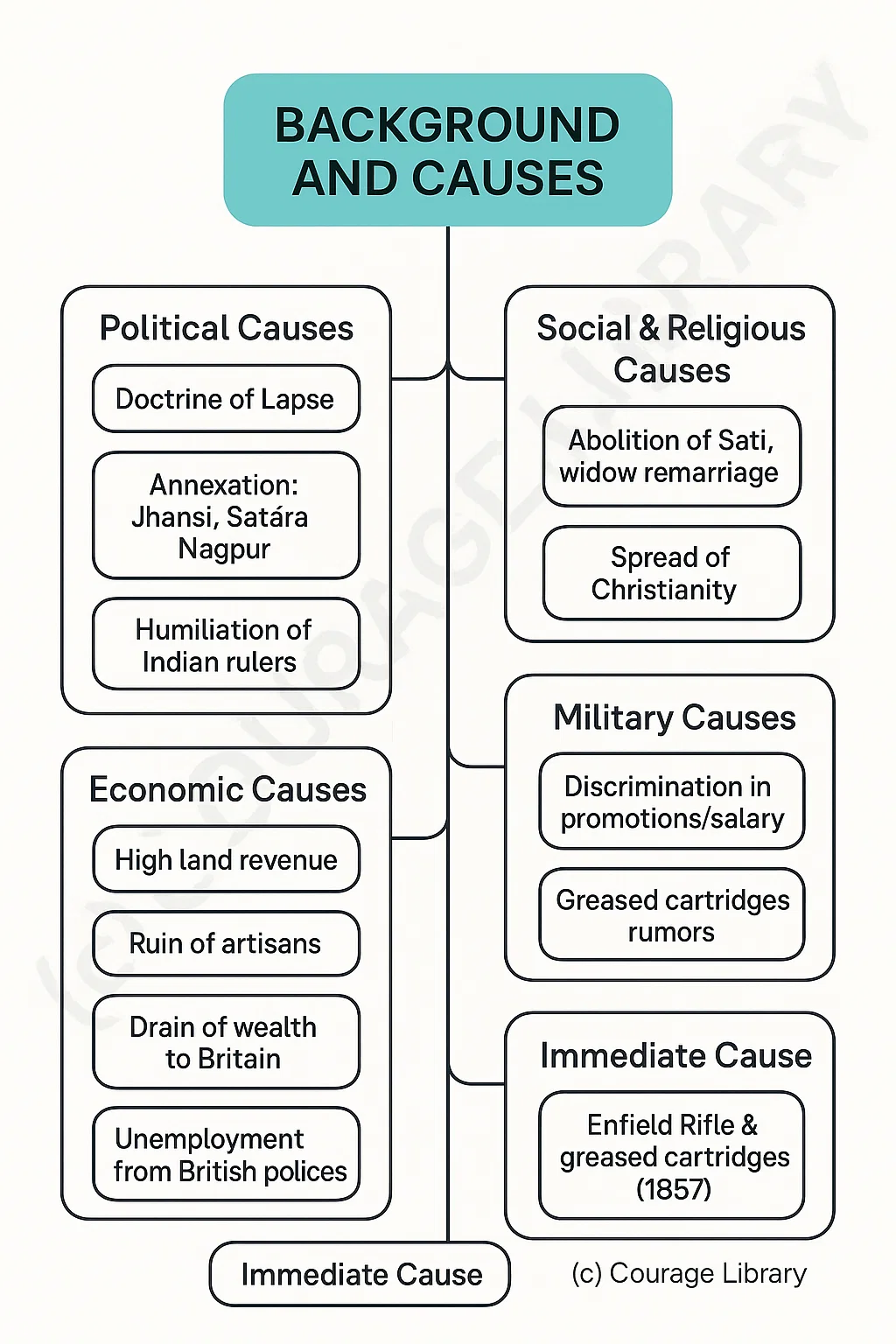
Major Centres and Leaders
| Region | Leader(s) |
|---|---|
| Delhi | Bahadur Shah Zafar |
| Kanpur | Nana Saheb, Tantia Tope |
| Jhansi | Rani Laxmi Bai |
| Awadh (Lucknow) | Begum Hazrat Mahal |
| Bihar | Kunwar Singh |
| Faizabad | Maulvi Ahmadullah |
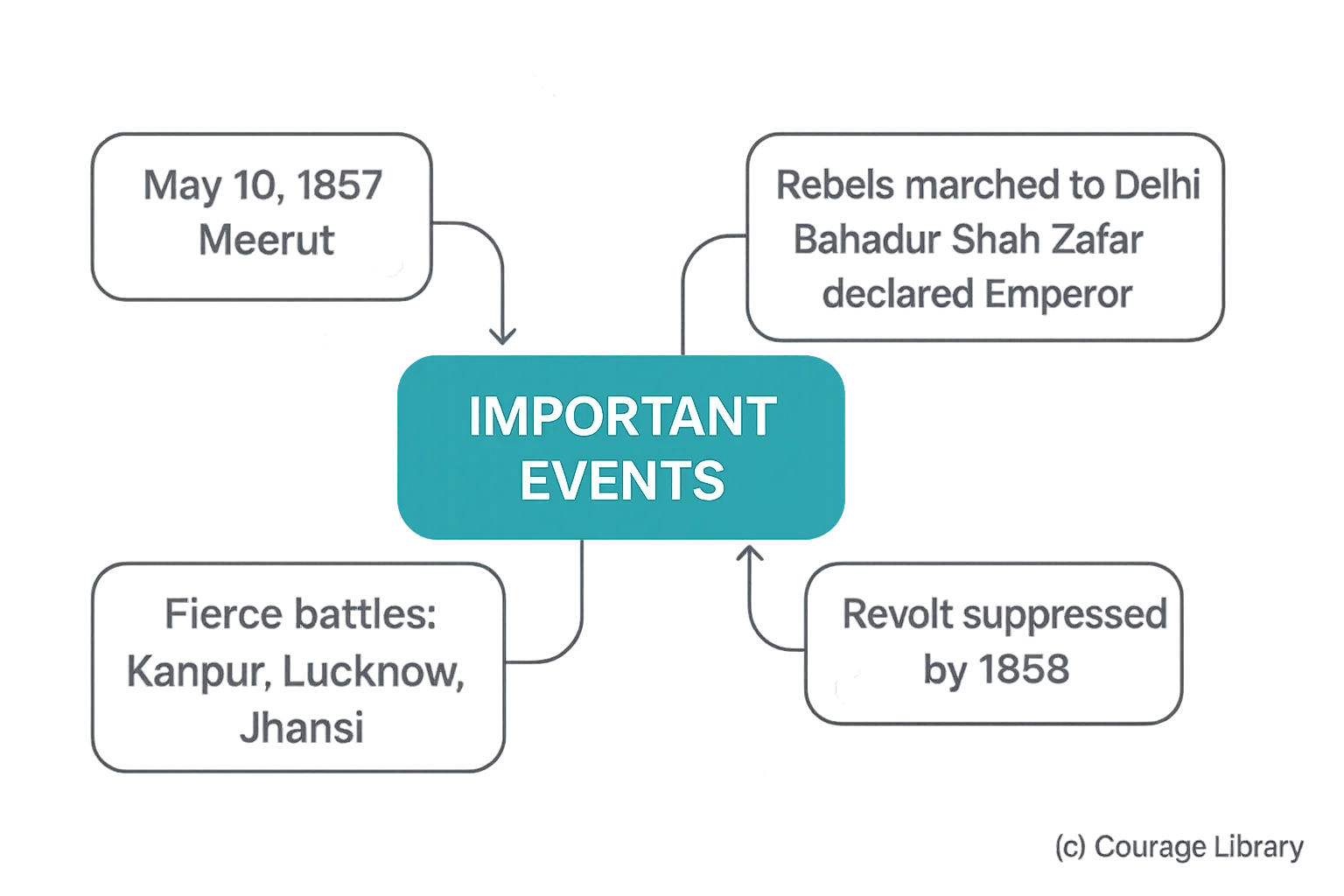
Important Events
- May 10, 1857: Revolt began at Meerut.
- Rebels marched to Delhi, declared Bahadur Shah Zafar as Emperor.
- Fierce battles in Kanpur, Lucknow, Jhansi.
- British suppressed the revolt by 1858.
- Slogan: "Maro Firangi Ko"
British Suppression
- Leaders like Rani Laxmi Bai, Tantia Tope were killed.
- Bahadur Shah Zafar was exiled to Rangoon.
- British took brutal revenge (mass executions).
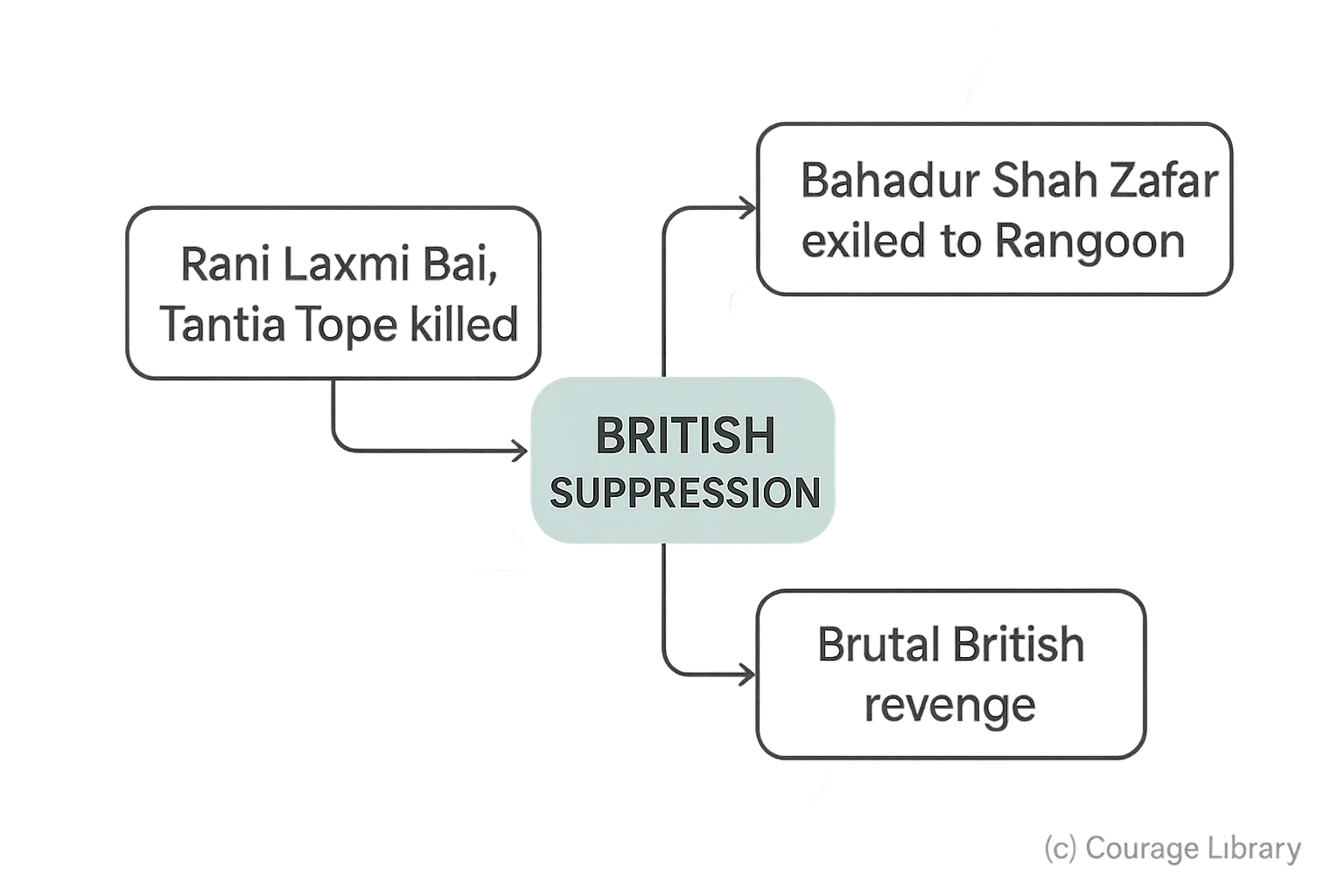
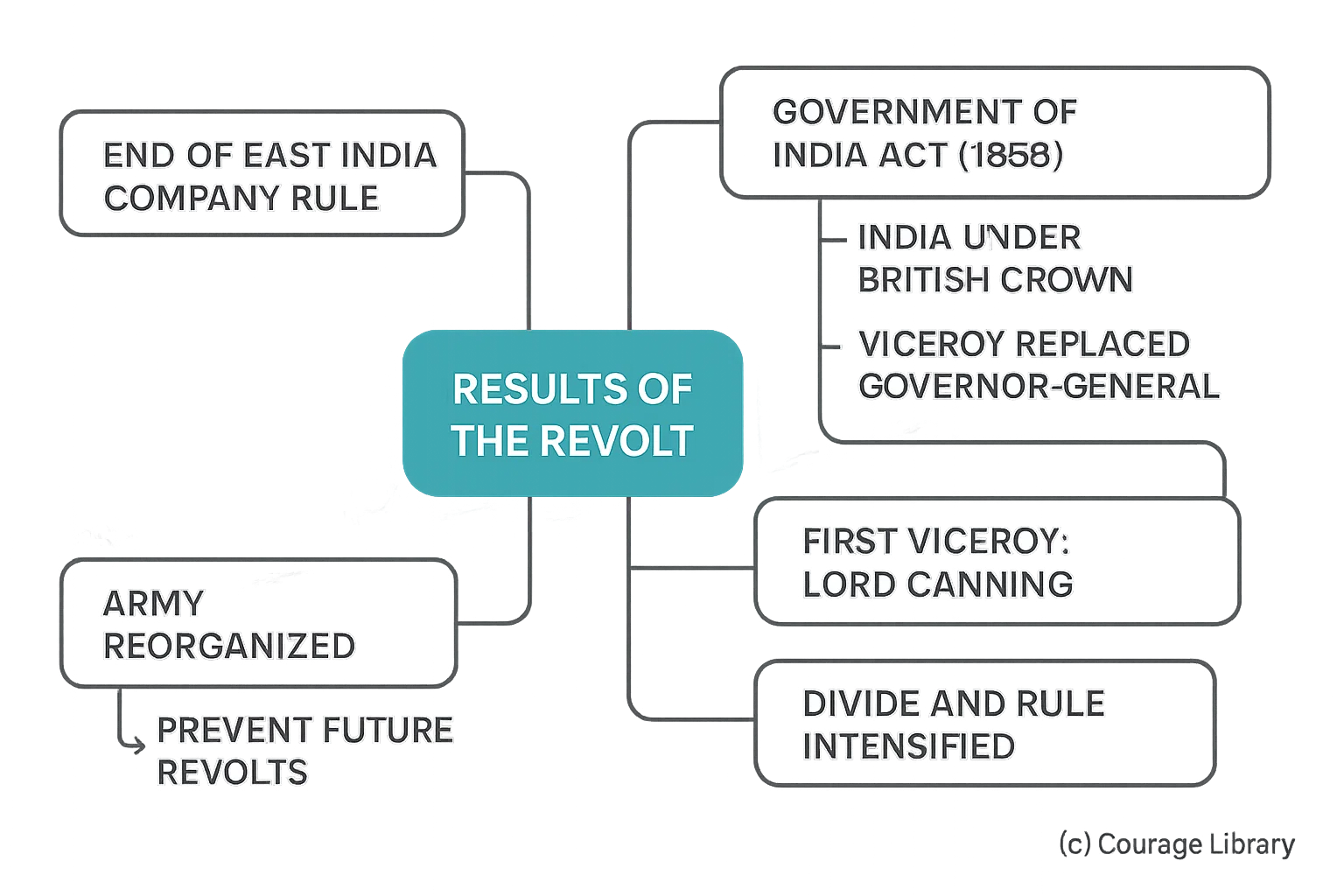
Results of the Revolt
- End of East India Company Rule.
- Government of India Act 1858:
- India under British Crown.
- Viceroy replaced Governor-General.
- First Viceroy of India: Lord Canning.
- Army reorganized to prevent future revolts.
- Divide and rule policy intensified (Hindu-Muslim divide).
Reasons for Failure
- Lack of unity and coordination.
- Limited to northern and central India.
- No modern weapons or training.
- No common leader or ideology.
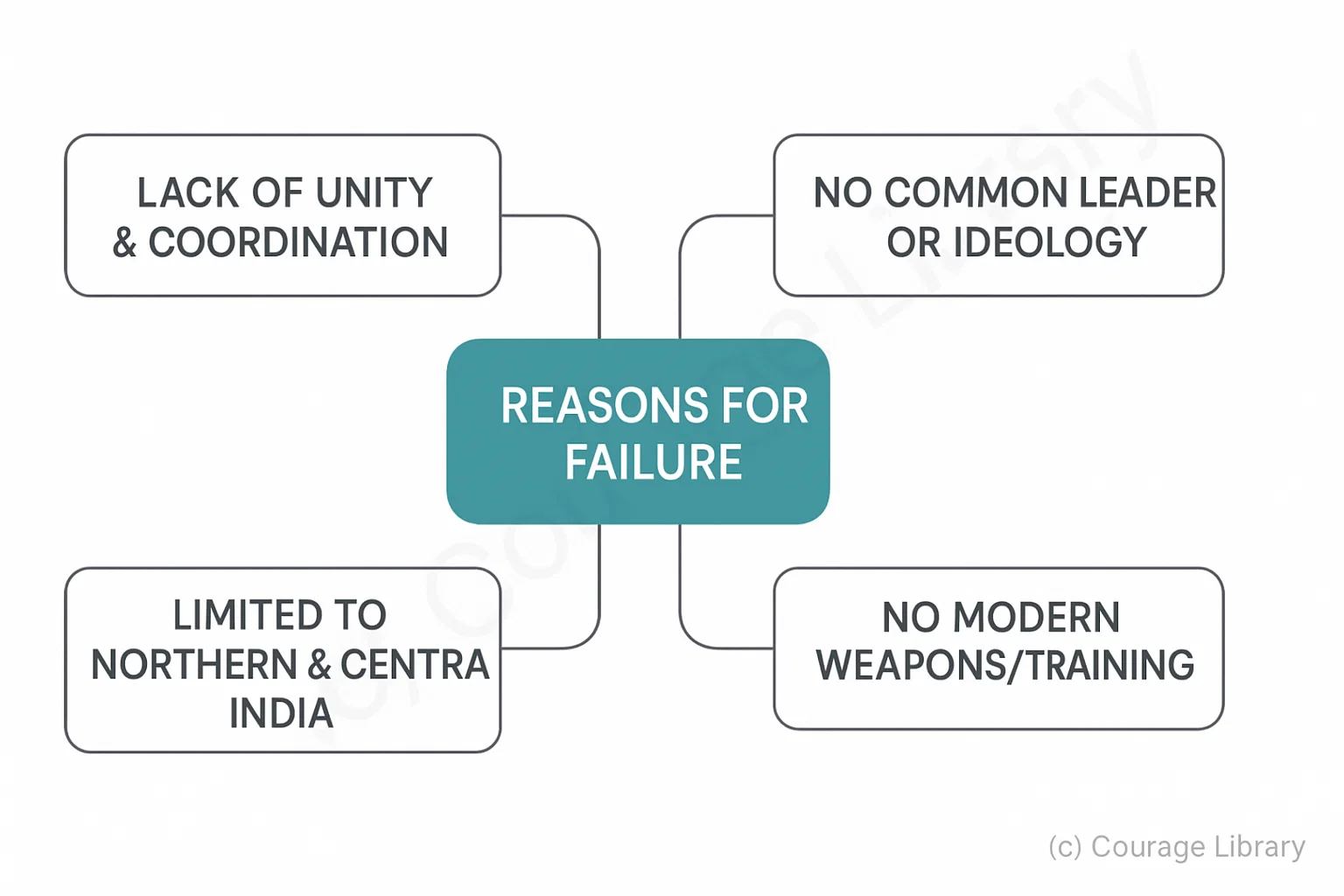
Developed By Jan Mohammad
Next
Start Your SSC CGL Journey Now!
Join Courage Library to experience disciplined study and expert support.
Be a Couragian!